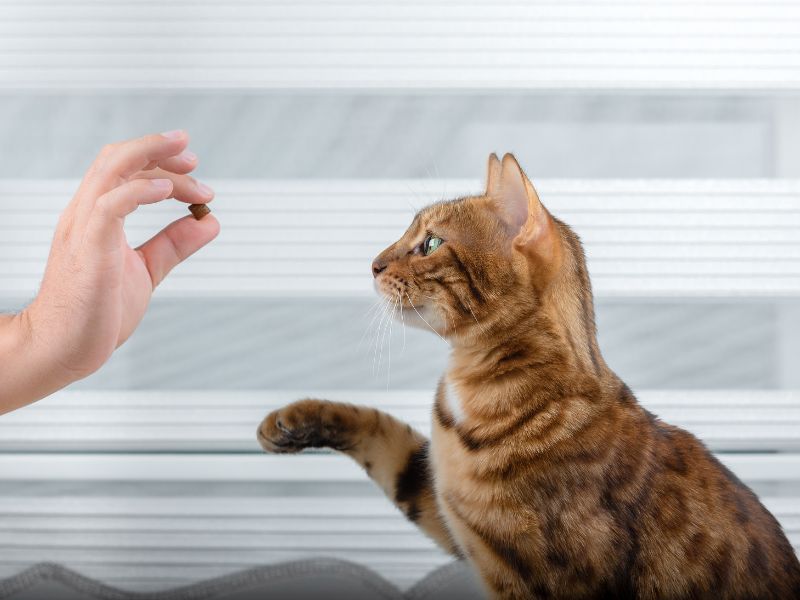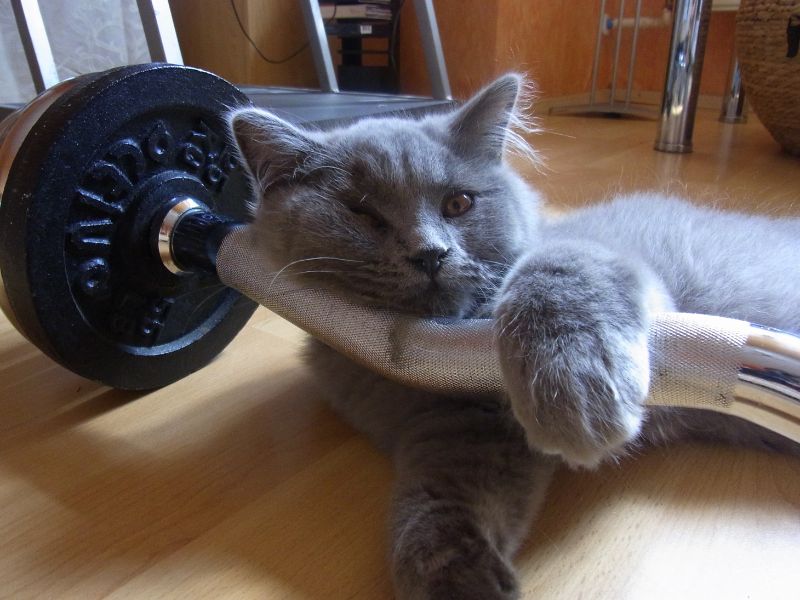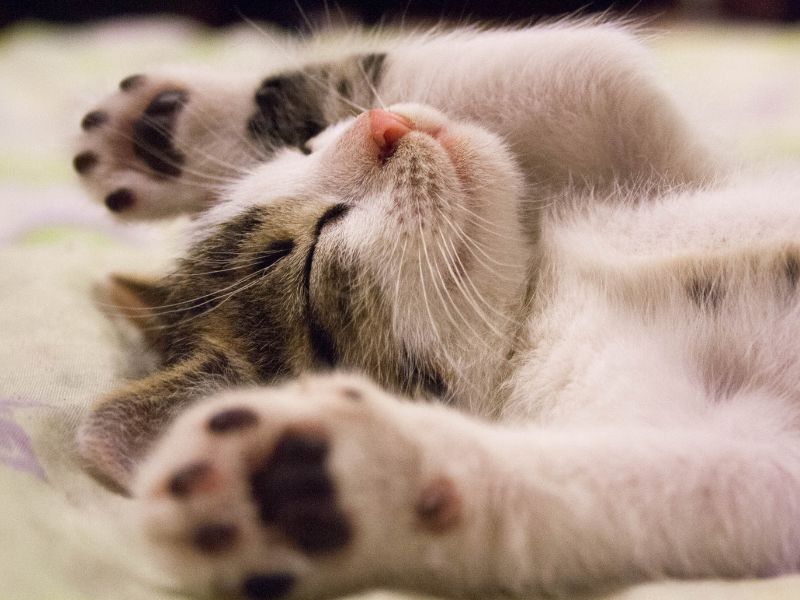Are you ready to embark on a feline adventure? Whether you’re a first-time cat owner or have been blessed with the company of a furry friend for years, training your cat is an essential part of ensuring a happy and harmonious relationship. But how do you go about training a cat? In this guide, we’ll delve into the world of feline behavior and provide you with valuable insights and practical tips to help you train your cat effectively. From basic commands to litter box training, scratching solutions to curbing unwanted behaviors, we’ll cover it all. With patience, consistency, and a dash of creativity, you’ll be amazed at how trainable and responsive cats can be. So, get ready to unleash your inner cat whisperer and embark on a journey of discovery as we explore the fascinating world of cat training.
Understanding Cat Training
Training a cat requires an understanding of their unique nature and instincts. Unlike dogs, cats are independent and have a strong sense of territoriality. They are motivated by their own desires and preferences, which can make training a little more challenging. However, with the right approach and a deep understanding of feline behavior, you can successfully train your cat and strengthen your bond.
It’s important to remember that cats are highly intelligent creatures. They are capable of learning and can be trained to respond to commands, just like dogs. However, their motivation may differ. While dogs are often motivated by praise and treats, cats are more motivated by their own desires, such as playtime or access to a high perch. Understanding what motivates your cat is key to successful training.
The Benefits of Training Your Cat
Training your cat offers numerous benefits, both for you and your feline friend. When your cat is well-trained, you can enjoy a more harmonious home environment. A trained cat is less likely to engage in destructive behaviors, such as scratching furniture or eliminating outside the litter box. They are also less likely to exhibit aggression towards humans or other animals.
Training your cat can also enhance your relationship with them. By establishing clear communication and boundaries, you can develop a deeper level of trust and understanding. Your cat will feel more secure and confident, knowing what is expected of them. Additionally, training provides mental stimulation for your cat, preventing boredom and promoting overall well-being.
Common Misconceptions About Training Cats
Before we dive into the specifics of cat training, it’s important to dispel some common misconceptions. One of the most prevalent misconceptions is that cats cannot be trained. While it’s true that cats have a mind of their own, they are certainly trainable. It may require a different approach compared to training a dog, but with patience and the right techniques, you can achieve great results.
Another misconception is that training a cat is cruel or goes against their natural instincts. This couldn’t be further from the truth. Training provides mental stimulation and enriches your cat’s life. It allows them to use their natural instincts in a positive and constructive way. By training your cat, you are providing them with the tools they need to navigate the human world while still embracing their feline nature.

Basic Training Techniques for Cats
When it comes to training your cat, there are several basic techniques that can be highly effective. One popular method is clicker training. This positive reinforcement technique involves using a clicker to mark desired behaviors, followed by a reward. The clicker serves as a marker to let your cat know that they have performed the desired behavior correctly. Over time, your cat will associate the sound of the clicker with a reward and will be more likely to repeat the behavior.
Another important aspect of basic training is teaching your cat basic commands. Start with simple commands like “sit” or “come.” Use a clear and consistent verbal cue, paired with a hand signal. Reward your cat with treats or praise when they respond correctly. Remember to keep training sessions short and fun, and always end on a positive note. Training should be a positive experience for both you and your cat.
Clicker Training for Cats
Clicker training is a highly effective technique for training cats. It allows you to communicate with your cat in a way that they understand, using positive reinforcement. To start clicker training, you’ll need a clicker and some treats that your cat loves.
Begin by associating the sound of the clicker with a reward. Click the clicker and immediately give your cat a treat. Repeat this several times until your cat starts to associate the clicker with a reward. Once your cat understands the association, you can start using the clicker to mark desired behaviors.
For example, if you want to train your cat to sit, wait for them to naturally sit down. As soon as they do, click the clicker and give them a treat. Repeat this process several times, gradually adding a verbal cue like “sit” as your cat starts to understand the connection between the behavior, the click, and the reward. With consistency and repetition, your cat will learn to associate the command with the desired behavior.
Teaching Your Cat Basic Commands
Teaching your cat basic commands is an essential part of their training. It allows you to communicate effectively and establish boundaries. Start with simple commands like “sit,” “stay,” and “come.” Here’s how you can teach your cat these basic commands:
- Sit: Hold a treat close to your cat’s nose, then slowly move it upwards. As your cat follows the treat with their eyes, their natural instinct will be to sit down. As soon as their bottom touches the ground, say “sit” and reward them with the treat.
- Stay: Have your cat sit in front of you. Hold out your hand, palm facing towards them, and say “stay.” Take a step back, then immediately step forward and reward them with a treat. Gradually increase the distance and duration of the stay command.
- Come: Start by calling your cat’s name in an upbeat tone. As they approach you, say “come” and reward them with a treat. Repeat this several times, gradually increasing the distance between you and your cat.
Remember, consistency is key when training your cat. Practice these commands in different environments and situations to reinforce their training. Always reward your cat for their efforts and keep training sessions short and engaging.
House Training for Cats
House training, also known as litter box training, is an essential skill for any cat. Cats are naturally clean animals and prefer to eliminate in a designated area. Here are some tips to help you successfully house train your cat:
- Choosing the right litter box: Select a litter box that is large enough for your cat to comfortably turn around in. Opt for an open litter box, as some cats may feel confined in a covered box. Place the litter box in a quiet and easily accessible location.
- Choosing the right litter: Cats have individual preferences when it comes to litter. Experiment with different types of litter to find the one your cat prefers. Fill the litter box with enough litter to allow for digging and covering.
- Introducing your cat to the litter box: When introducing your cat to the litter box, gently place them in the box and allow them to explore. If your cat eliminates outside the litter box, clean up the mess without scolding them. Avoid using harsh chemicals or strong-smelling cleaners, as this may deter your cat from using the litter box.
- Scooping and cleaning the litter box: Scoop the litter box at least once a day to remove waste. Regularly empty and clean the litter box to ensure a fresh and inviting environment for your cat. Cats are more likely to use a clean litter box.
With patience and consistency, your cat will learn to use the litter box reliably. If your cat continues to have accidents outside the litter box, consult with your veterinarian to rule out any underlying medical issues.

See Also: Can You Walk a Cat on a Lead?
And: How to Make Your Cat’s Litter Box More Appealing
Training Your Cat to Walk on a Leash
Walking a cat on a leash can be a fun and enriching experience for both you and your feline friend. Not only does it provide physical exercise, but it also allows your cat to explore the great outdoors in a safe and controlled manner. Here’s how you can train your cat to walk on a leash:
- Introduce the harness: Start by introducing your cat to a harness. Allow your cat to sniff and investigate the harness before gently putting it on. Reward your cat with treats and praise while they are wearing the harness, so they associate it with positive experiences.
- Getting your cat comfortable with the leash: After your cat is comfortable wearing the harness, attach the leash and let them drag it around the house under your supervision. This helps your cat get used to the sensation of being attached to a leash.
- Slowly introduce outdoor walks: Once your cat is comfortable with the harness and leash indoors, it’s time to venture outside. Start with short walks in a quiet and familiar environment. Allow your cat to explore at their own pace, using the leash to guide them gently. Reward your cat with treats and praise throughout the walk.
- Gradually increase the duration and distance: As your cat becomes more confident and comfortable with outdoor walks, gradually increase the duration and distance of your walks. Always prioritize your cat’s safety and keep a close eye on their behavior.
Not all cats will take to walking on a leash, so be patient and understanding. If your cat shows signs of distress or discomfort, it’s best to explore alternative ways to provide them with exercise and mental stimulation.
Advanced Training for Cats
Once your cat has mastered the basic commands, you can move on to more advanced training. Advanced training can include tricks, agility training, or even interactive puzzle toys that stimulate your cat’s problem-solving skills. Here are a few ideas for advanced training:
- High-five: Teach your cat to give you a high-five by using a clicker and treats. Gently tap your cat’s paw, then immediately click and reward them. Repeat this process, gradually raising your hand higher until your cat lifts their paw to meet your hand.
- Jumping through hoops: Set up a small hoop on the ground and encourage your cat to jump through it using treats or toys. Gradually raise the hoop higher to increase the difficulty.
- Interactive puzzle toys: Provide your cat with interactive puzzle toys that require problem-solving skills. These toys can keep your cat mentally stimulated and provide hours of entertainment.
Remember, advanced training requires patience, consistency, and a deep understanding of your cat’s individual preferences and abilities. Always make training sessions fun and rewarding for your cat.
Seeking Professional Help for Cat Training
If you’re facing challenges in training your cat or need guidance on specific behavioral issues, don’t hesitate to seek professional help. A certified animal behaviorist or a cat trainer can provide expert advice tailored to your cat’s unique needs. They can help you develop a customized training plan and offer valuable insights into your cat’s behavior.
Professional help can be particularly beneficial if your cat is exhibiting aggressive behaviors, excessive anxiety, or if you’re struggling with litter box issues. Remember, there’s no shame in seeking help. It shows your commitment to your cat’s well-being and your dedication to building a strong and positive relationship with them.
Conclusion
Training your cat is an investment of time and effort, but the rewards are well worth it. By understanding your cat’s behavior and motivations, using positive reinforcement techniques, and establishing clear communication, you can successfully train your cat and strengthen your bond. From basic commands to litter box training, walking on a leash to advanced tricks, there are endless possibilities for training and enriching your cat’s life. So, embrace the challenge, be patient, and enjoy the journey of training your cat to be the best version of themselves. Happy training!

